
MG HS review

Introduction
Remember MG? It’s back.
Well, we say "back", but it didn't go anywhere, to be honest.
Sadly, though, little song and dance has been made about the cars it's produced in the 15 or so years since it was bought by the Chinese following MG Rover's demise in the mid-noughties.
In truth, the MGs that have come since the brand's rescue have mainly been forgettable, and, as a result, you see few of them on the UK's roads.
Select's rating score* - 3.2 / 5
At A Glance
The first-generation MG 6 fastback was awful, and the GS SUV was barely any better.
The HS is the successor to the GS. However, if the groaning has already started, there's a lot more hope for this one, not least because MG has changed the name, signalling it wants a fresh start.
Hopefully, MG will be keen for this car to hit the ground running.
While SAIC, MG’s parent company, has often learned the hard way, it has crucially taken on board the negative feedback of its earlier models. As a result, it is now closing the gap to rivals such as Nissan and Dacia very quickly.
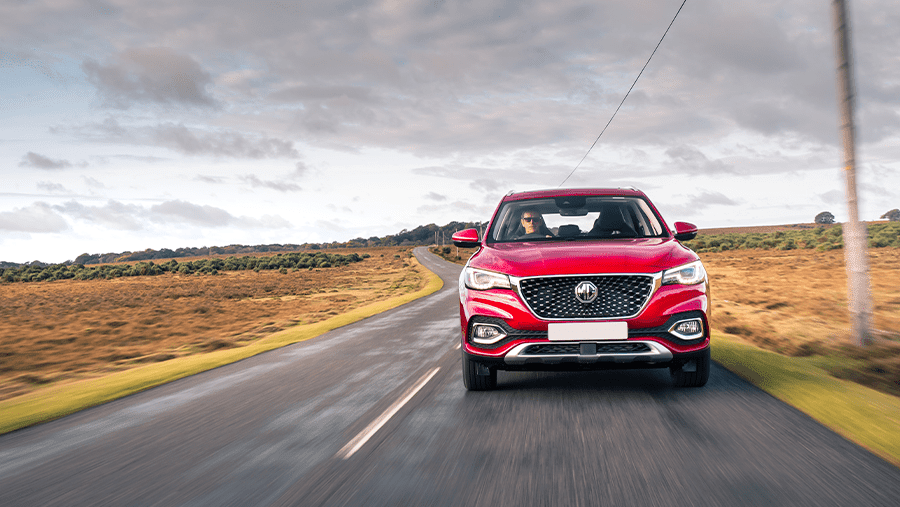
The HS isn’t completely brand new – it has been offered in some Far Eastern markets for three years now, although it didn’t come to the UK until about a year after its launch.
It is still technically a crossover, but it’s now the largest SUV MG makes, sitting alongside the ZS and the new (and impressive) all-electric MG4 in the range. The comparison with Dacia is probably quite apt, as MG has positioned itself as a budget brand that makes cheap cars.
But Dacia has already mastered the trick of not making them look or feel cheap. And a glance at the HS's equipment list suggests that MG has started to get the hang of it, too.
While the HS is nothing spectacular to look at, it isn't bad looking. In fact, from a distance, it appears as though someone at MG has spent too much time staring at a Jaguar E-Pace. It is not identical to the Jag, and any similarity is more down to the grille's shape. But it convincingly draws your attention, and, let's face it, taking anything made by JLR is not a bad place to start designing a car.
The wide grille dominates the front end, surrounded by silver, which connects nicely to the shapely, but not overly aggressive, headlights. Then there’s a lower grille beneath shaped like a barbell, which houses the fog lights in a sporty kind of way.

The side isn't as characterful – in fact, it could be mistaken for any generic SUV. But there are creases over the wheel arches and a bulge running along the top of the doors from front to back.
The bodywork is shaped at the bottom of the doors, showing off a bit more cladding to hint at its more rugged capabilities. At the same time, the rear is relatively plain and straightforward, with chrome exhaust tips at either side and a silver-coloured diffuser underneath.
The taillights are shaped and fit nicely around the top corners of the number plate housing.
Overall, it's pretty good-looking. It’s a reasonably safe and uncontroversial design, rather than the bold, brash or alien-like aesthetics we've seen from some manufacturers. Indeed, it wears its looks well and seems family-friendly and modestly inviting.

Key Features
In terms of trims and engines, there are a couple of options but nothing complicated. And you quickly realise that the HS is very well equipped.
Excite trim is entry-level, offering 18-inch alloy wheels, a 10.1-inch infotainment touchscreen, SatNav, a digital instrument display, leather seats and air conditioning. You also get automatic headlights and windscreen wipers, adaptive cruise control, keyless entry and start, power-folding door mirrors, four speakers, a rear parking camera and Apple CarPlay and Android Auto.
The Exclusive trim offers the same but adds dual-zone air conditioning, heated front electric seats, lumbar adjustment for the driver, a six-speaker audio system with 3D sound, ambient interior lighting, a panoramic sunroof and LED headlights.

In terms of power, there’s a turbocharged petrol engine – the four-cylinder 1.5-litre T-GDi – which produces 162PS and is available with a six-speed manual or a seven-speech dual-clutch automatic on both trims.
Alternatively, you can choose the same engine and an electric motor as a plug-in hybrid (PHEV), which comes with a ten-speed (yes, ten) automatic, which ups the power output to 258PS. The trims are the same name as the PHEV, but each offers some added extras, with Excite getting a 360-degree parking camera and heated front seats. Meanwhile, Exclusive adds a powered tailgate, leather upholstery, metal sports pedals and front and rear LED sequential indicators.
You also get MG Pilot with all models, which adds an impressive array of safety features, which we’ll look at later.
Very impressive stuff.
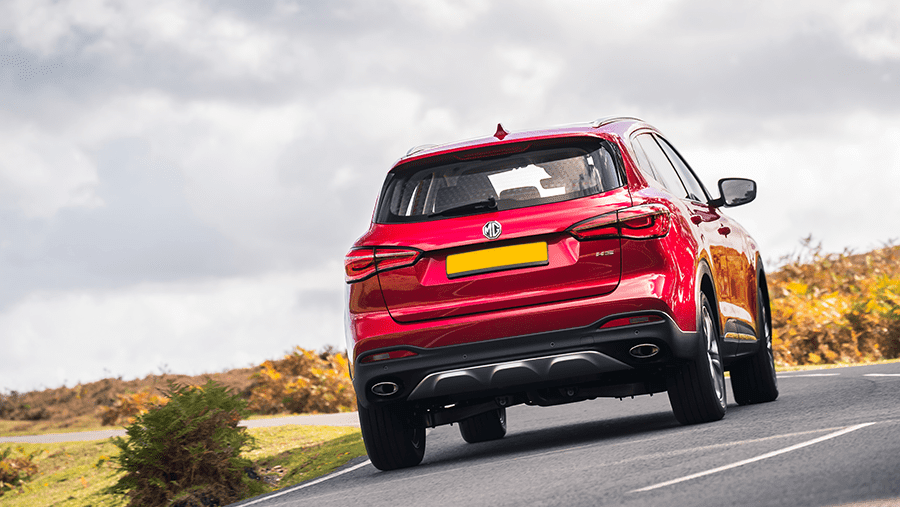
Range & Batteries
If you choose the hybrid, you can expect to spend more upfront. The PHEV comes with a 14.9kWh battery, which is good for 32 miles of all-electric range. Not sure whether that would fit you? Take a look at our guide on EV range to find out more.
Performance & Drive
If you pick the non-hybrid version, the 1.5-litre petrol will get you from 0-60mph in 9.6-seconds. That is not bad, but you do need to thrash it a bit to make good progress. However, admittedly, it feels a little bit quicker when you’re behind the wheel.
If you want something quicker, the plug-in hybrid can do the same in 6.9-seconds, which is very decent indeed. It also makes things easier at higher speeds, such as when overtaking on dual-carriageways and motorways.
Of course, unlike the non-hybrid, it can also offer emissions-free driving around town centres in all-electric mode. This is fine for pottering around and in stop-start congestion at the traffic lights - but it does limit the car's performance. The engine doesn't sound exceptionally smooth in either the hybrid or non-hybrid, especially when it's working hard at higher revs, but it's not off-putting.
All the transmissions on offer have their plus points, with the manual being relatively easy to use and the seven-speed automatic moving away gently at low speed. However, the latter can be a bit jerky if you demand a change-down by flooring the accelerator at lower speeds.

The pick of the bunch, though, is the ten-speed automatic in the hybrid, which, despite the unusually excessive choice of gears to pick from, never seems to struggle or be in the wrong one at the wrong time. Unfortunately, while the PHEV is the one to go for in terms of performance, it's a case of roles reversed regarding handling.
The petrol model provides a good blend of decent cornering ability and ride comfort. It feels settled at all speeds, with an ideal weight to the steering, helping the agility around the bends while containing the body roll well. The hybrid, though, is less successful. The extra weight of the electric motor and batteries make it less nimble in corners, causing the body to lean around bends more prominently than the non-hybrid.
While the PHEV is still comfy, it takes a little longer to settle down after going over bumps on the tarmac.

Charging
If you opt for the hybrid, you can expect it to take about three hours to charge up its batteries from 0-100%.
Charging speeds are limited to 7kW, so a more potent public charge point will be no quicker than a typical home wall box. You can find out more about getting the most out of every charge by consulting our guide on picking your ideal charger
Running Costs & Emissions
The petrol model manages around 37mpg – 37.9 with the manual and 36.6 with the automatic - which isn’t bad - but isn’t anything to get excited about.
CO2 emissions of 168g/km in the manual and 174g/km in the automatic mean the latter is in the highest bracket for Benefit in Kind tax at 37%. So, this version is best avoided if you’re after a company car.
The PHEV, though, is in the 12% band as it only produces 43g/km of CO2.
You also get up to 155.8mpg, although you’ll likely get less than this in the real world.
MG isn't rated highly for reliability and hasn't performed incredibly well in customer surveys, but maintenance costs aren't exceptionally high.
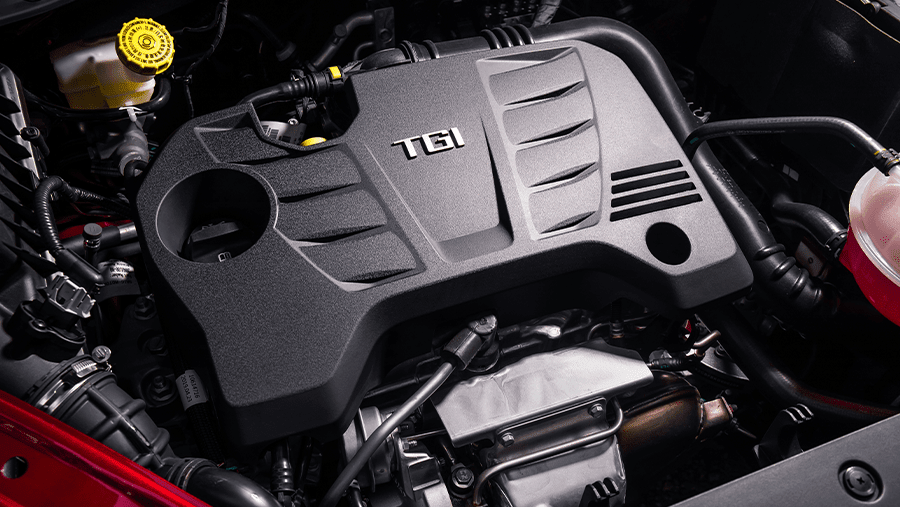
Interior & Technology
We were a little worried that the cheapness of the MG HS would mean the interior would be truly awful, especially given some of its recent predecessors.
Given those low expectations, we were delighted with the cabin. Like the exterior looks, it's nothing to write home about, and it doesn't offer anything that's going to set it apart from its rivals. But it looks nice, it's simple and pleasant, and it isn’t anywhere near as low rent as the car’s price would suggest.
There are many soft-to-the-touch plush surfaces, and although there are plenty of cheaper plastics, most are out of your eye line.
The steering wheel is nice to hold on to, and generally, it's a friendly, uplifting and clutter-free design with plenty of character.

There are very few buttons and switches inside – and that’s because just about everything you could want has been entombed within the infotainment system.
Unfortunately, that includes the air conditioning controls, which makes it a real issue to adjust the temperature on the move.
Most manufacturers leave physical air con buttons in place so you can feel around for them and adjust them safely on the move without diverting your attention from the road. But you’ll struggle to do that in the HS.

Not only that, but the touchscreen is a nightmare to use, being slow, clunky and unresponsive. Plus, it's not an exceptionally sharp resolution by modern standards. SatNav directions don't appear on the digital instrument display, which is disappointing, but at least the inclusion of the display and the SatNav is welcome.
Sadly, the poor infotainment system is vastly inferior to most of its rivals. So, if this is important to you, then you're best off looking elsewhere or waiting in the hope that MG fits the better system found in its new MG 4 electric car. You can use Apple CarPlay and Android Auto, but you’re still stuck with the annoyingly slow touchscreen.
Nevertheless, while we’re left to conclude that there’s more work to be done, there’s little doubt that MG has taken a big step forward with its interior design compared with its earlier efforts.

Practicality & Boot Space
The sports seats in the Exclusive trim are comfortable and great if you're driving long-distance.
If you opt for the cheaper Excite trim, the seats are still perfectly acceptable. In both, though, taller drivers will feel they’re a bit high up, even with the seat in its lowest position. Meanwhile, all versions come with adjustable lumbar support, which is a welcome inclusion for anyone with a bad back.
If you pick the non-hybrid, you'll have to make do with manual adjustment for the driver's seat with Excite trim, with Exclusive grade offering electric adjustment, which is included in both trims on the PHEV. The front has plenty of headroom, even with the panoramic roof. And, although there's slightly less in the rear, taller passengers won't be complaining too much.

If there is one negative point, it’s that the floor is high, meaning your knees will sit higher up, limiting under-thigh support. But the rear is more spacious than some of the MG’s challengers, and the rear seats can recline.
There is a good view out of the windows, although the slope in the roofline towards the back, coupled with the angled rear window, means the pillars at the rear restrict visibility.
Thankfully, parking sensors and a reversing camera are included throughout the range as standard. There is plenty of space to store things inside. However, the boot is on the small side, measuring 463 litres (448 litres in the PHEV), which expands to 1,454 litres (1,375 litres in the PHEV) with the rear seats folded down in a 60/40 split.
Those figures aren't alarming, but most immediate competitors offer more space, while towing capacity is 1,750kg, dropping to 1,500 in the hybrid.
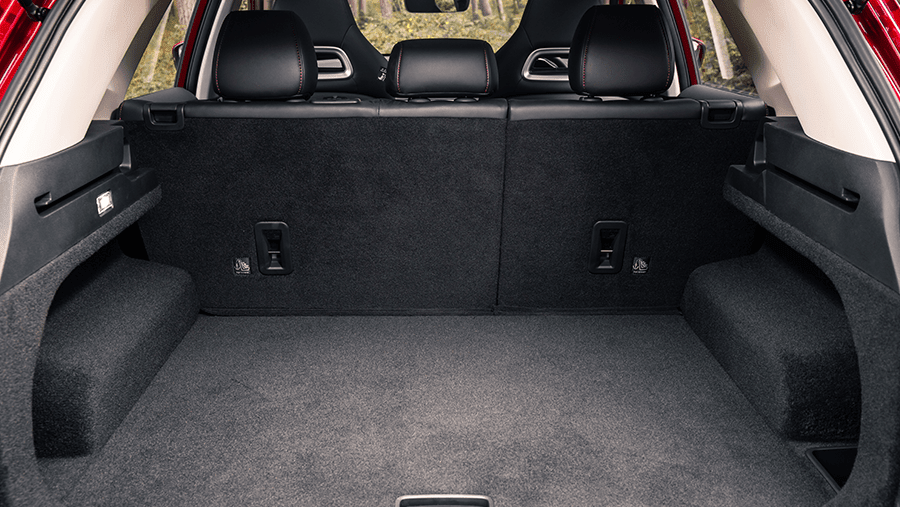
Safety
The MG HS has an impressive array of safety equipment as part of the MG Pilot Advanced Driver Assistance System, which is included in all models.
You get active emergency braking with pedestrian and bicycle detection, and lane keep assist with lane departure warning. You also get traffic jam assist, intelligent speed limit assist, blind spot detection, rear cross-traffic alert, and intelligent high beam assist.
Due to the way some systems work, a couple of things are reduced or removed if you opt for the manual transmission.

Getting all this as standard – not to mention that this is included at entry-level – is virtually unprecedented for a car at this price point.
Moreover, Euro NCAP awarded the MG HS a five-star safety rating after putting it through its paces in various crash tests.
It scored 92% for adult occupants, 81% for children, 64% for vulnerable road users (cyclists and pedestrians) and 76% for safety assists.
Regarding our earlier comparisons with Dacia, you may be interested to know that the popular Duster scored only three stars and just 37% for safety assists.
The newer Dacia Jogger, meanwhile, scored just one star.
Options
It makes a refreshing change, but no options are offered on the MG HS, although you will pay slightly more for some body colours.
As for the equipment levels, what you see is what you get, with a very well-equipped car at entry level as standard.
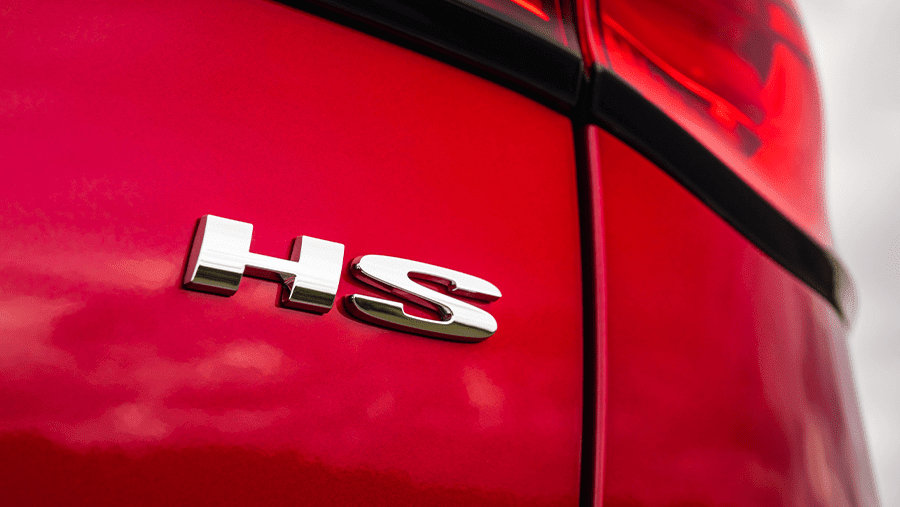
MG deserves particular praise for this as some of the safety features are things that would be optional extras on premium brand cars.
Getting things such as adaptive cruise control at entry-level in a car undercutting Nissans and Kias by several thousand pounds is quite remarkable.
Rival Cars
The Dacia Duster is one of the few cars that can undercut the HS, but it doesn't include anywhere near as much kit, and, as we've seen, it isn't as safe either.
Likewise, the HS beats just about every other opponent on price, such as the Skoda Karoq, Peugeot 3008, and Nissan Qashqai.
A Seat Ateca and a Ford Puma are both worth considering, too. And while most of the cars we’ve mentioned are arguably better all-round packages than the MG, you won’t get near the HS for price.

Verdict & Next Steps
Overall, the MG HS deserves an awful lot of credit.
It is a remarkable feat to cram in so much technology without any significantly noticeable corner-cutting, and the level of equipment offered is in a league of its own.
Most rivals are better to drive, though, and despite the interior being pleasing to look at, other competitors have offerings that are at least on par with it.
The infotainment system lets it down badly, mainly because we're so reliant on these systems to do basic things nowadays, and this will be a deal-breaker for some.
Changing the temperature on the move is challenging, so you’ll need to develop an intuition for how warm or cold you want the air con before you set off.
If you can look past that, though, the HS is without doubt superb value for money when it comes to leasing a car.
Where to next?
View our latest MG HS Leasing Deals - from just £239.99 per month inc VAT**
Looking for a great leasing deal? Check out our incredible range of Special Offers
New small SUV? Read our latest Car Reviews and find the right model for you
Want to know more about leasing? Take a look at our comprehensive Leasing Guides
Interested in everything motoring? Why not catch up on all the latest Car Leasing News.
*Score based on Select’s unique meta score analysis, taking into account the UK’s top five leading independent car website reviews of the MG Motor UK HS Hatchback
**Correct as of 10/11/2022. Based on 9 months initial payment, 5,000 miles over a 48 month lease. Initial payment equivalent to 9 monthly payments or £2,159.91 Ts and Cs apply. Credit is subject to status.
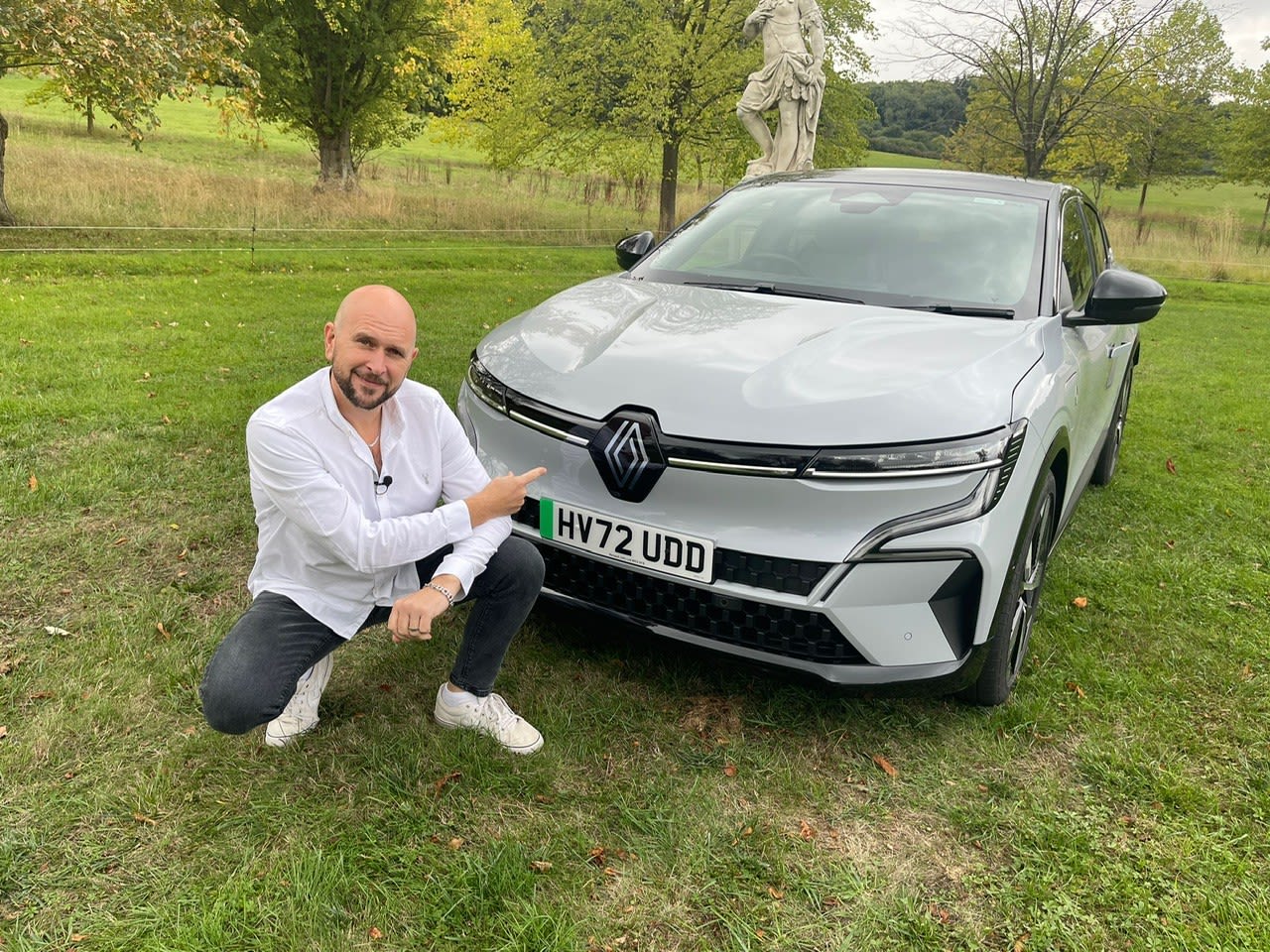
.jpg)
.jpg)

.jpg)















